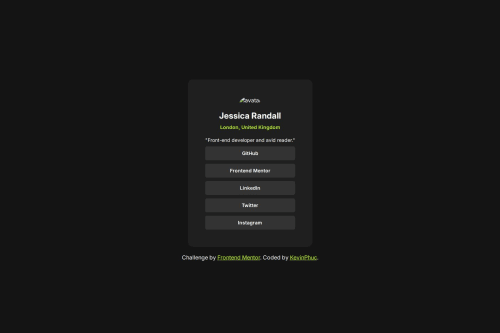Submitted over 1 year agoA solution to the Social links profile challenge
Social Links Profile
@kevinphuc

Solution retrospective
What are you most proud of, and what would you do differently next time?
Improve in naming tag in html
What challenges did you encounter, and how did you overcome them?The responsive layout | How to center the content in the middle of the page
What specific areas of your project would you like help with?Please give me more advices in order to improving myself in my learning path. There are some fields I would love to hear are how to cleaning my code. Also, the effective of css is one of my consider.
Code
Loading...
Please log in to post a comment
Log in with GitHubCommunity feedback
No feedback yet. Be the first to give feedback on Vĩnh Bảo Phúc's solution.
Join our Discord community
Join thousands of Frontend Mentor community members taking the challenges, sharing resources, helping each other, and chatting about all things front-end!
Join our Discord